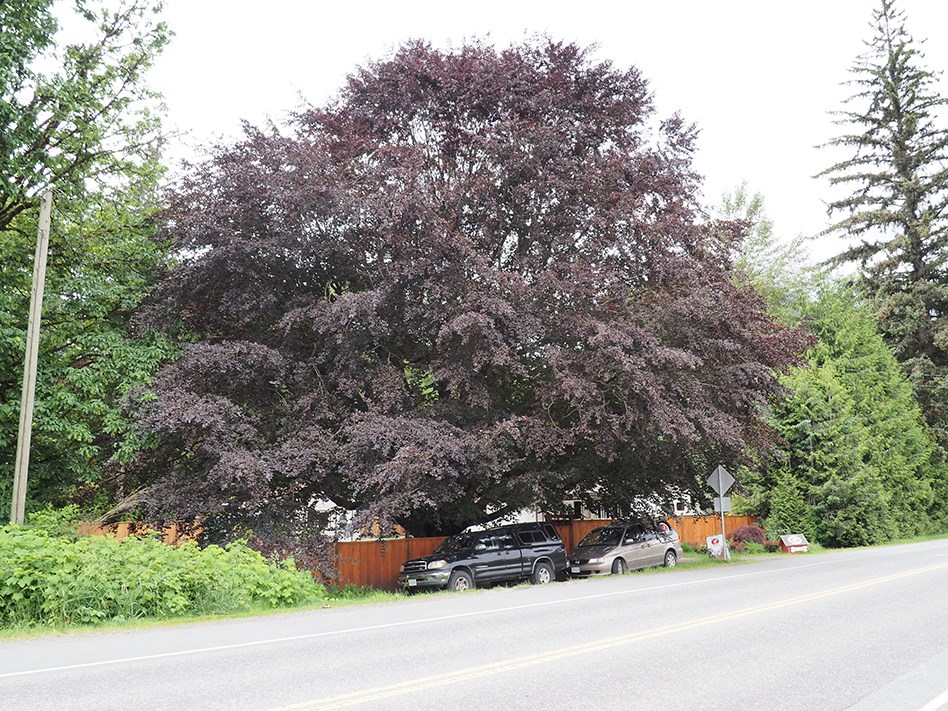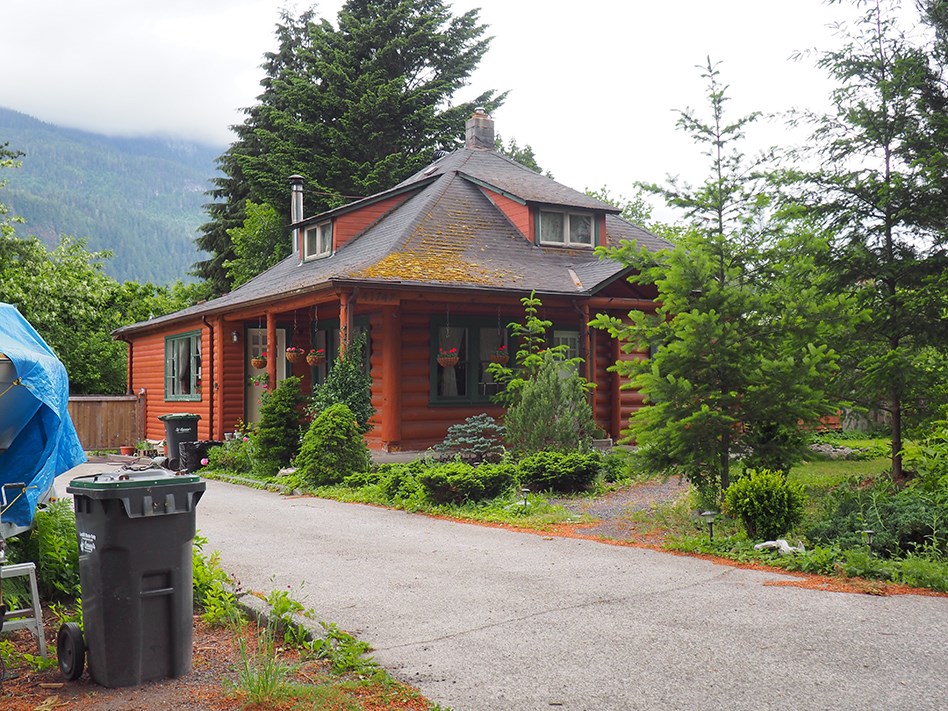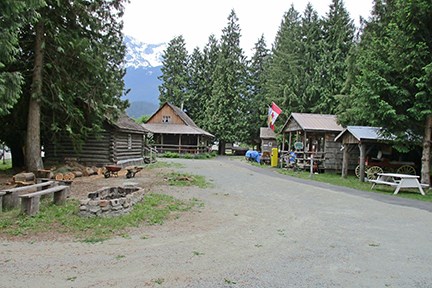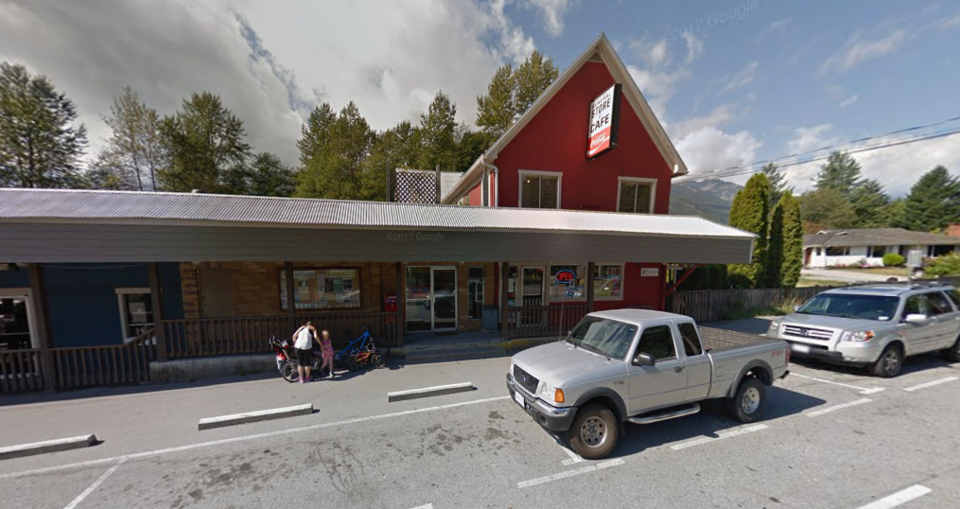Everyone seems to agree that preserving Squamish's history is important, but despite various efforts over the years, there isn't yet an official heritage policy in place at the municipal level.
Locals involved with heritage organizations say this needs to happen soon. With increasing development, there is an urgency to preserve what we have — before it is too late, they say.
"This is very important for our community because it is our roots and pretty soon we are going to have no roots — we are going to look around, and we aren't going to recognize the place. And we'll have no direction of where we came from," said Bianca Peters, president of the Squamish Historical Society.
She is particularly worried these days about the future of the recently sold Chieftain Hotel, which, in 1958, replaced the Newport Hotel — built in 1912 — after it burned down. *
"My concern is what is going to happen with that iconic sign. What is going to happen with that iconic hotel?"
Well-known local history buff and now municipal councillor Eric Andersen recently told The Chief he will be encouraging his fellow council members to make a District-wide heritage policy a priority.
"We need to protect that, and that requires from the District, policy... but we also need investment in community facilities, not only for storing them but also for presenting them... a proper, up-to-standard archives room and storage area," he said.
"We have private organizations [like the mine, forestry and railway organizations]... They all have their own collections also, but we have to look at the whole picture and decide what to do about this."
As well as historical buildings, Andersen said historical records and trees are worth preserving.

For example, the copper beech tree near Leski's Crossing — the site of the old Brackendale Elementary School — was planted in 1936 to commemorate the coronation of King George VI of England. Such trees were planted across Canada that year.
Andersen also points to the row of Japanese walnut trees along Government Road north of the Easter Seals Camp.
These were planted in 1906, at the edge of what was once a hop farm.
Along Wilson Crescent are some valuable heritage homes as well, Andersen said.

Where we are/how we got here
The new Official Community Plan does prioritize the development of a heritage policy with a stated aim to "protect, integrate and celebrate community heritage resources within Squamish."
Outlined goals include: developing a Squamish heritage inventory, registry and heritage evaluation criteria as well as a framework to review heritage values.
The 2015-to-2018 strategic plan also outlines heritage policy as a goal.
Andersen said that in recent community plans, heritage houses and buildings are being noted by planners, which is a step in the right direction.
Over the years, various stakeholders have brought the need for a heritage policy to the forefront, including getting the attention of the council at the time.
In 1993, Leif Walther, a University of Victoria geography student, put together and presented his Preliminary Squamish Heritage Inventory at municipal hall.
In June of 1997, council minutes show there was concern over the preservation of the copper beech tree at Leski's Crossing that Andersen referenced.
Yet no policy followed.
In 2005, at the then-council's request, the District's planning department issued a report toward a heritage policy, but it didn't go much further at that time.
A municipality can play a foundational role in identifying community heritage resources, developing incentives and protective measures and creating more awareness around the value of heritage assets, according to that report.
Peters noted representatives from various local organizations concerned about heritage, including the Squamish Nation, the Britannia Mine Museum, the Sea to Sky Forestry Centre Society and the West Coast Railway Association, got together in February of 2016 to lobby the District for a bylaw, but the timing wasn't right in terms of the municipal budget. The Squamish Public Library also sent a letter about the issue of heritage in 2016.
Like Andersen, Peters is hopeful the newly-minted council will make it a priority.
acting mayor Doug Race told The Chief on Monday that thus far, councils have always had other, more pressing issues to deal with.
“It has just never been a priority,” he said.
While the community still has a lot of other pressing issues, it may be time to add creating a heritage policy to the list when the new council sits down to make its strategic plan in the next month or so, he said.
“It would be an interesting discussion,” he said. “Maybe it is time because if you lose it, of course, it is gone.”

What Pemberton is doing
While Squamish does have a museum — within the West Coast Railway Heritage Park — other communities such as Burnaby, Duncan and Pemberton have museums that include heritage villages.
Drive through Pemberton's downtown and make a left and there sits a fenced-in collection of five heritage buildings and three modern, retro-looking buildings on a one-acre site.
While the municipality also doesn't have an official heritage policy, it donated land for the community museum in 1984. One by one, heritage buildings were donated.
The museum opened with three buildings.
In the late ’80s, the Village moved the museum to its current location — also donated municipal lands.
The municipality also designated the museum as a heritage site.
In about 2003, a petition was circulated to move the museum from its volunteer-based model to be a service.
The petition was successful, and in 2005, a referendum was held on the question. Eighty-five per cent of the voters supported this plan.
The museum's basic operating costs have since been funded by tax requisition dollars on an annual basis.
Pemberton museum's curator, Niki Madigan, also applies for numerous grants to help with costs.
Madigan said that the public has to want and support any such initiative.
"I like to say we are Pemberton's longest running community project," she said.
"You need a clear mandate, and you have to have community support. You have to or you are not going to survive."
She said a referendum question was great for the museum because it showed the municipality that the community valued and wanted the history preserved.
Andersen and Peters both said, due to land restrictions in Squamish and the condition of some of the wooden Squamish structures, such a village of buildings wouldn't be possible here.
[The railway museum has some, as mentioned, but they too are running out of room, Andersen noted.]
And for Peters, a heritage village is likely not the way to go anymore anyway.
"It is not so much that we want to move and save and preserve buildings," she said.
Museums are very expensive to operate and so more are going virtual, she said.
"This is 2018. Everything can be virtual."
[Go to the Squamish Historical Society website www.squamishhistory.ca for plenty of Squamish history. The society also has a storage locker for items that are donated.]
Protecting the most valuable heritage buildings and trees from getting taken down and then documenting online any that have not yet been is the key, Peters added.

Memories of the Brackendale General Store
The Brackendale General Store, built in 1916 according to the heritage inventory that was created in 1993, has been home to various long-time locals over the years.
One of those former residents is Ellen Grant, granddaughter of early Squamish settler Harry Judd.
Her family acquired the Brackendale General Store from Mrs. English in a trade of their home, which was near the site of modern-day Howe Sound Secondary, according to Grant.
Her family lived there for about three years when she was a girl. She has fond memories of that time.
"The store was Brackendale's meeting place. It was its centre because it also housed the post office," she said.
Grant's father would go down to the dock each day and pick up the mail off the arriving ship. Not many people had cars back then and Grant recalls her father spent many hours a day tinkering with their van outside the store so he could drive it to the waterfront each day.
The bedroom next to Grant's above the store wasn't always home to just human visitors, she recalled.
Some family friends who lived in Darrell Bay raised budgie birds, but when they moved to Vancouver Island they gave them to Grant's family to care for.
"So, if you can imagine sleeping next to a bunch of cooing birds," Grant said with a laugh.
A skunk also frequented the house so her father removed its glands and it was kept in the attic as a pet, sleeping in a discarded box from the store that her father fashioned into a bed.
The gland removal wasn't entirely successful, however, according to Grant, so they named the skunk 'Ishe.'
"Is he deodorized or isn't he?" explained Grant with a chuckle at the memory. "When he was hungry he would take his plate and bang it on the floor... One day we left the window open and he got out. My dad was so upset."
*Please note, this story has been updated since it was first posted to clarify that the Chieftain replaced the Newport Hotel.
Online Heritage by Jennifer Thuncher on Scribd



